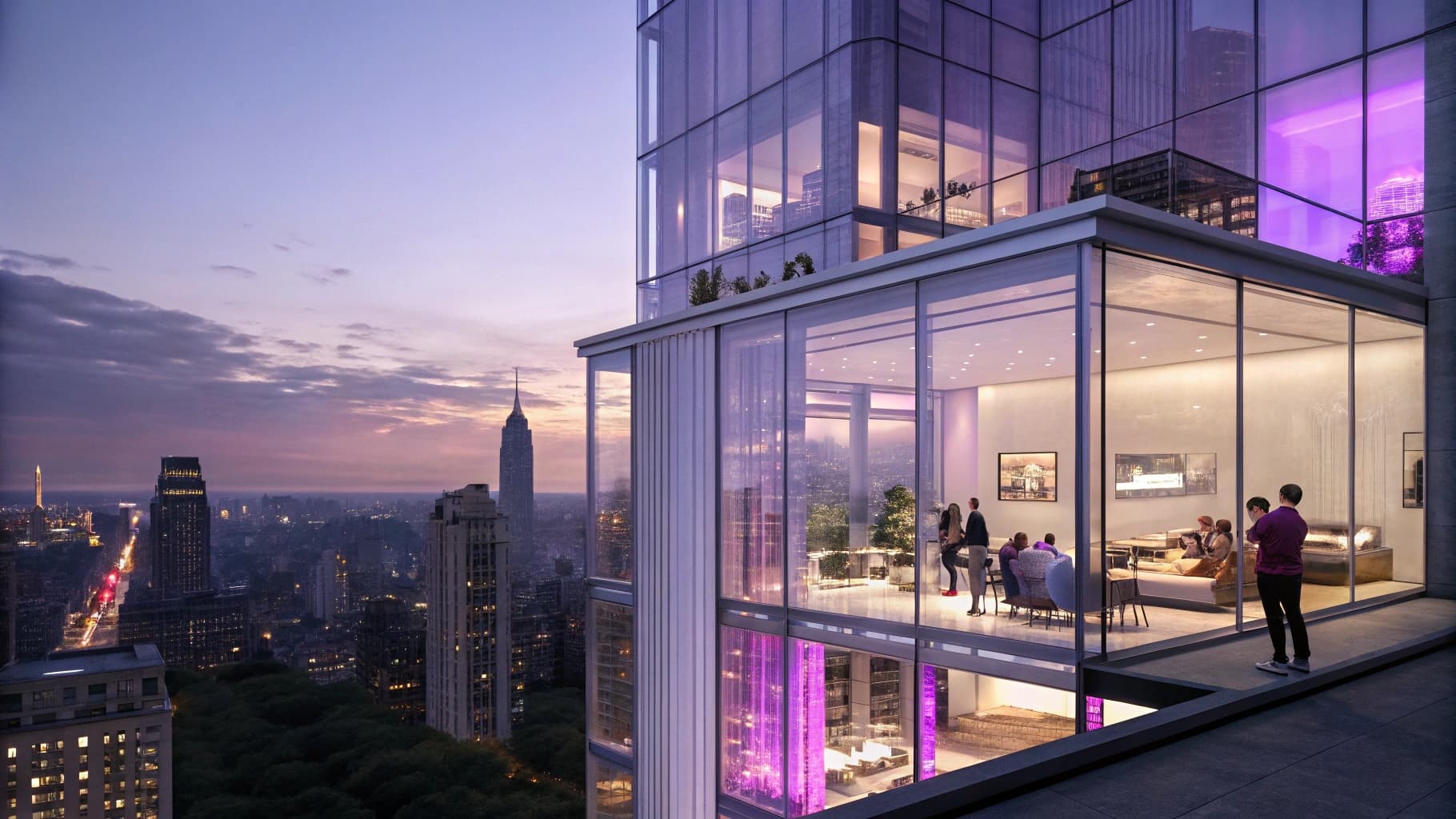Glass houses, often celebrated for their modern aesthetic and seamless integration with the surrounding environment, have become increasingly popular in urban settings. These structures, characterized by their extensive use of glass for walls, ceilings, and even floors, offer a unique living experience that blurs the lines between indoor and outdoor spaces. The allure of glass houses lies not only in their striking visual appeal but also in their ability to create bright, airy interiors that foster a connection with nature.
In cities where green spaces are limited, these homes provide an opportunity to bring the outside in, allowing residents to enjoy natural light and views of the urban landscape. However, the rise of glass houses in metropolitan areas is not without its challenges. While they can be architecturally stunning and environmentally friendly, they also present a range of practical issues that potential owners must consider.
From security risks to maintenance challenges, the realities of living in a glass house can be complex. As urban environments continue to evolve, understanding these challenges becomes essential for anyone contemplating the purchase or construction of a glass house. This article delves into the various aspects of glass houses in the city, exploring both their benefits and the potential drawbacks that come with such a distinctive architectural choice.
Security Risks and Privacy Concerns
One of the most significant concerns associated with glass houses is security. The transparent nature of these structures makes them inherently vulnerable to break-ins and theft. Unlike traditional homes with solid walls that provide privacy and concealment, glass houses expose their interiors to the outside world.
This visibility can attract unwanted attention from passersby and potential intruders. Homeowners may find themselves grappling with the dilemma of wanting to enjoy natural light and views while simultaneously needing to ensure their safety and privacy. To mitigate these risks, many glass house owners invest in advanced security systems that include surveillance cameras, motion detectors, and alarm systems.
Additionally, incorporating smart home technology can enhance security measures by allowing homeowners to monitor their property remotely. However, these solutions can be costly and may not fully alleviate concerns about privacy. The use of window treatments such as blinds or shades can provide some level of seclusion, but they also diminish the very qualities that make glass houses appealing—openness and light.
Striking a balance between security and the desire for transparency is a challenge that requires careful consideration.
Maintenance and Cleaning Challenges
The maintenance of glass houses presents its own set of challenges that can be daunting for homeowners. Glass surfaces require regular cleaning to maintain their clarity and aesthetic appeal. Urban environments often expose glass houses to dust, grime, and pollution, which can accumulate quickly on windows and facades.
This necessitates frequent cleaning, which can be labor-intensive and time-consuming. For those living in high-rise glass buildings, accessing windows for cleaning can be particularly challenging, often requiring professional services or specialized equipment. Moreover, the materials used in constructing glass houses can also impact maintenance needs.
While modern glass is designed to be durable and resistant to scratches, it is not impervious to damage from extreme weather conditions or environmental factors. Over time, seals around windows may deteriorate, leading to leaks or condensation issues that require repair. Homeowners must be proactive in addressing these maintenance concerns to ensure the longevity of their glass structures.
Regular inspections and maintenance schedules are essential to prevent minor issues from escalating into significant problems.
Exposure to Noise and Pollution
Living in a glass house in an urban environment often means increased exposure to noise pollution. The transparent walls that allow for stunning views also permit sound waves to penetrate easily into the living space. Traffic noise, construction sounds, and other urban disturbances can disrupt the tranquility that many homeowners seek in their residences.
This exposure can lead to a less comfortable living environment, particularly for those who value peace and quiet. To combat noise pollution, homeowners may need to invest in soundproofing solutions. This could involve using specialized acoustic glass designed to reduce sound transmission or incorporating sound-absorbing materials within the interior design.
Landscaping elements such as trees or shrubs can also help buffer noise from the street. However, these solutions may not completely eliminate noise issues, and homeowners must weigh the costs and benefits of various soundproofing options against their desire for an open, airy living space.
Vulnerability to Natural Disasters
Glass houses are particularly vulnerable to natural disasters such as hurricanes, earthquakes, and severe storms. The structural integrity of a building made primarily of glass can be compromised during extreme weather events. High winds can shatter windows or cause structural failure if not properly reinforced.
In earthquake-prone areas, the risk is even greater; glass houses may not withstand seismic activity as well as traditional homes built with more robust materials. To address these vulnerabilities, architects and builders must incorporate safety features into the design of glass houses. This may include using tempered or laminated glass that is less likely to shatter upon impact or reinforcing frames with steel or other durable materials.
Additionally, homeowners should consider location when building a glass house; areas prone to natural disasters may require more stringent building codes and safety measures. Understanding these risks is crucial for anyone considering a glass house in a region susceptible to environmental hazards.
Energy Efficiency and Temperature Control
Energy efficiency is another critical consideration for glass house owners. While large expanses of glass allow for abundant natural light, they can also lead to significant heat loss during colder months and excessive heat gain during warmer months. This fluctuation in temperature can result in increased energy consumption as homeowners rely on heating and cooling systems to maintain comfortable indoor conditions.
To enhance energy efficiency, many modern glass houses incorporate advanced glazing technologies that improve insulation properties. Low-emissivity (Low-E) coatings can reflect heat back into the home during winter while keeping it out during summer months. Additionally, strategic placement of overhangs or awnings can help control solar gain by providing shade during peak sunlight hours.
Homeowners may also consider integrating smart home systems that optimize energy use based on occupancy patterns and weather conditions. By investing in these technologies, residents can enjoy the benefits of natural light without sacrificing comfort or incurring high energy bills.
Insurance and Liability Considerations
Owning a glass house comes with unique insurance and liability considerations that differ from traditional homes. The high value of glass structures often necessitates specialized insurance policies that account for potential risks associated with breakage or damage from environmental factors. Homeowners must ensure they have adequate coverage not only for the structure itself but also for personal property within it.
Liability concerns are also heightened in glass houses due to their visibility and accessibility. If a visitor were to sustain an injury on the property—whether from slipping on wet floors or being struck by falling debris—homeowners could face significant legal repercussions. It is essential for owners to consult with insurance professionals who understand the specific risks associated with glass houses and can recommend appropriate coverage options.
Additionally, implementing safety measures such as non-slip flooring and clear signage can help mitigate liability risks.
Conclusion and Recommendations for Glass House Owners
For those who choose to embrace the unique lifestyle offered by glass houses in urban environments, understanding the associated challenges is crucial for ensuring a positive living experience. While these structures provide unparalleled beauty and connection to nature, they also require careful planning and consideration regarding security, maintenance, noise exposure, disaster preparedness, energy efficiency, and insurance. Potential owners should conduct thorough research before committing to a glass house project.
Consulting with architects experienced in designing such structures can provide valuable insights into best practices for safety and sustainability. Additionally, engaging with local building authorities will ensure compliance with zoning regulations and building codes specific to glass constructions. Ultimately, while glass houses present certain challenges, they also offer an opportunity for innovative design and a unique lifestyle that celebrates transparency and connection with the environment.
By addressing potential issues proactively and investing in appropriate solutions, homeowners can enjoy all the benefits that come with living in a beautifully designed glass house amidst the hustle and bustle of city life.
FAQs
What are the risks of owning a glass house in the city?
Glass houses in the city are at risk of break-ins and theft due to the visibility of the interior and valuables.
Are glass houses more susceptible to damage from natural disasters?
Glass houses are more susceptible to damage from natural disasters such as storms, earthquakes, and hail due to the fragile nature of glass.
Do glass houses require more maintenance compared to traditional houses?
Glass houses require more maintenance as they need frequent cleaning to maintain their transparency and to remove smudges and fingerprints.
Are glass houses more energy efficient compared to traditional houses?
Glass houses are less energy efficient compared to traditional houses as they have poor insulation and can lead to higher heating and cooling costs.
Do glass houses offer less privacy compared to traditional houses?
Glass houses offer less privacy compared to traditional houses as the transparent nature of glass allows for easy visibility into the interior of the house.

